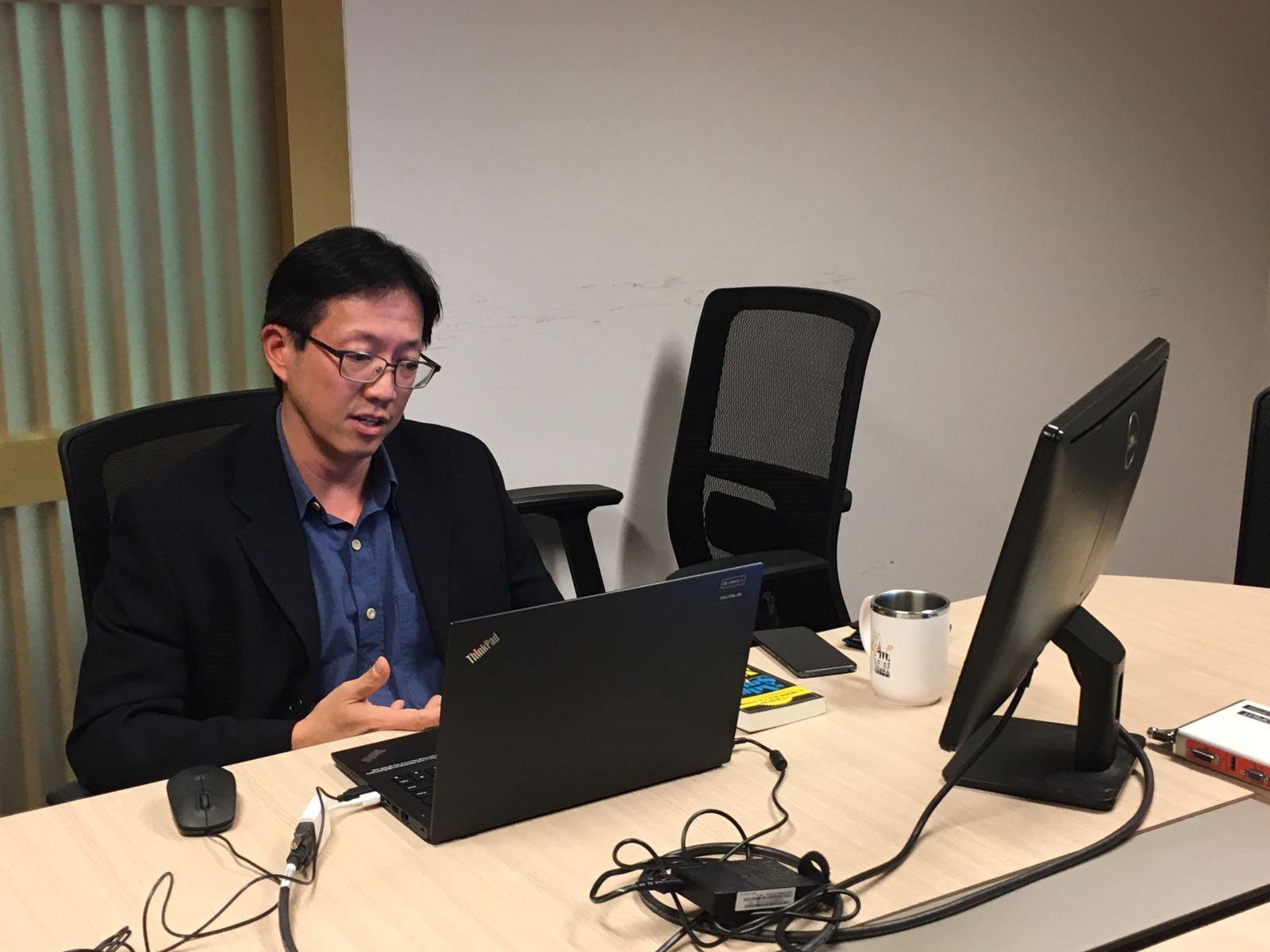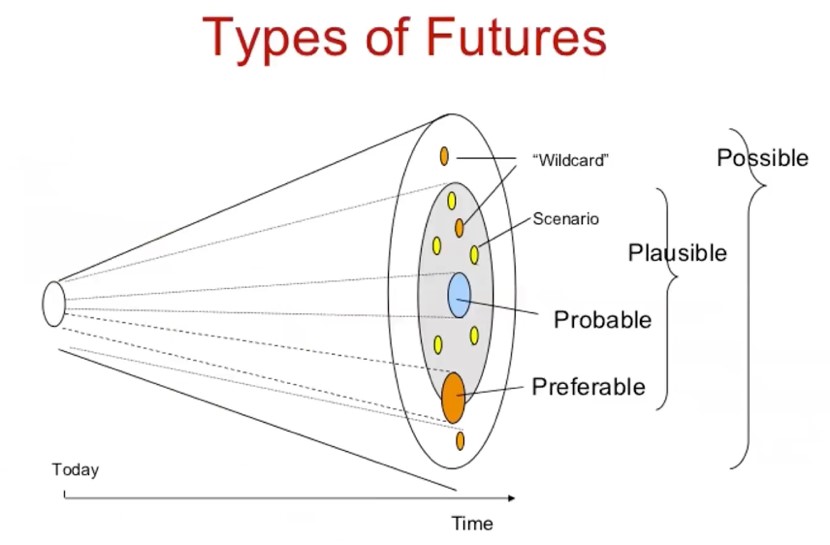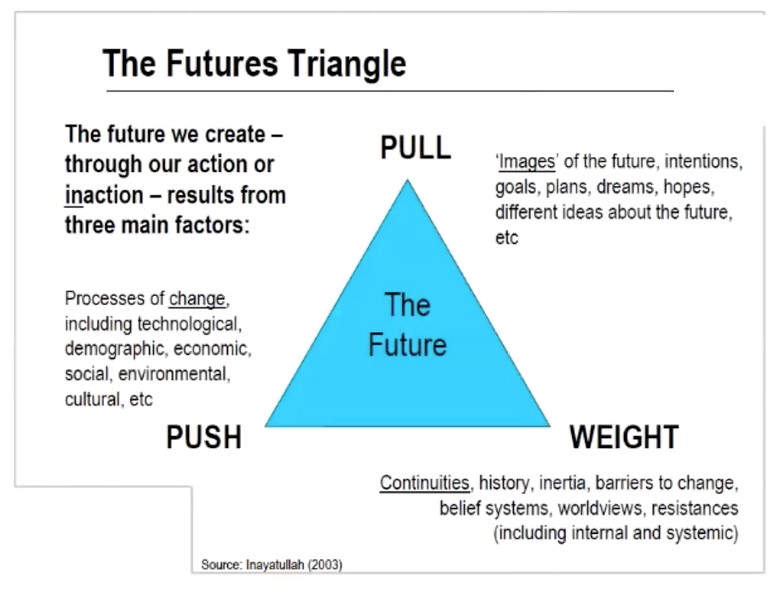Knowledge Webinar on Futures Thinking with Dr. Adrian
By Trang Nguyen (MPP’19)
Dr. Adrian Kuah is currently the Head of Case Studies Unit at the Lee Kuan Yew School of Public Policy (LKYSPP), NUS.
As part of a webinar series for alumni, he recently led a webinar titled ‘Futures Thinking in Public Policy’ to elucidate how to apply this skill in public management. Given the increasingly disruptive world today in which public managers have to cope with rising issues through long-term planning, predictive analytics has become more crucial yet elusive than ever.

Discovering the Future
Futures thinking, according to Dr. Adrian, involves strategic foresight and scenario planning. It is an eclectic, multidisciplinary, and fascinating field which could contribute to the analyses of a public policy enterprise via forecasting and risk management. But at the same time, this field invites lots of criticism due to its uncertainty and lack of confidence.
In fact, statements such as “The growth forecast was better than expected”, “I was almost right”, and “Ah, a near-miss” represent the fluid nature of trying to grasp the future. While acknowledging the importance of planning ahead, Dr. Adrian believes the main question to ask is how useful all these sources of prediction are, and what kind of ‘future’ do we want here.
Planning Framework for Futures
Public policy professionals tend to employ the following framework to address an issue:
Problem Identification  Problem Planning
Problem Planning  Problem Solving
Problem Solving
This framework shows that the so-called ‘Planning’ phase is widely favoured by civil servants and policy makers to assess and resolve problems in theory. However, we are living in a VUCA (Volatile Uncertain Complex Ambiguous) world where uncertainties always exist such that the plan often ends up as being just “the Plan”. Nevertheless, while the plan itself might turn out to be futile, the process of planning is still useful to learn about our strengths, weaknesses, fears, and hopes.
Singapore has been well known for its government’s planning capabilities. In fact, former Deputy Prime Minister of Singapore S. Rajaratnam asserted in 1979: “[…] we are not only living in a world of accelerating change but also of changes which are global in scope… [and] only a future-oriented society can cope with the problems of the 21st century.” It is indeed amusing that he said this when Singapore had just gained independence and had to deal with day-to-day issues such as housing, economic growth, and security, while also looking ahead to future challenges.
Main Types of Futures
Singapore’s experience proves the significance of long-term planning, which characterises futures thinking as linear thinking. This concept extrapolates the present into the future so that we can move away from ‘probable future’ to a broader domain where we can contemplate a wider range of scenarios/possibilities representing ‘black swan’ or ‘wildcard” events (as illustrated in the image below).

Besides this traditional linear approach to governance, Dr. Adrian advocates employing numerous mindsets based on different levels of uncertainty:
- Level 1: ‘Official Future’ explored via the past and the present
- Level 2: ‘Official Future, +/- Percent’ explored via decision trees
- Level 3: ‘Plausible Future’ - scenario planning and beyond sensitivity analysis
- Level 4: ‘Aspirational Future’ - co-creation and transformation of scenario planning
As a result, the future becomes a guide to our current actions or behaviours, and also a learning space for new interpretations and options. When coping with uncertainty, people usually refer to religion, superstition, conspiracy theory, and expert opinion. Reflecting on multiple futures will help increase personal and collective resilience, in addition to suggesting alternatives to the present.
Three Futures Thinking Laws
Dr. Adrian eventually rounded off with three futures thinking laws from the famous science fiction author Arthur C. Clarke:
- Law #1 (Failure of imagination of the established experts): “When a distinguished but elderly scientist states that something is possible, he is almost certainly right. When he states that something is impossible, he is very probably wrong.”
- Law #2 (Failure of courage to reach out of the echo chamber and comfort zone): “The only way of discovering the limits of the possible is to venture a little way past them into the impossible.”
- Law #3 (Failure to understand novel concepts and categories): “Any sufficiently advanced technology is indistinguishable from magic.”

In conclusion, we are subject to three forces in the Futures Triangle: Pull, Push, and Weight (as shown in the image above). In other words, these aspects should not exist in a vacuum, but instead manage the future, past, and present in a healthy, virtuous cycle without any one of them dominating the others.
You can watch the full webinar here.
Expert’s Bio: Dr. Adrian Kuah is a Senior Research Fellow at LKYSPP. His research interests include futures studies, complexity science, and political philosophy (focusing on pragmatism). He served in various positions in both public as well as private sectors, notably the Monetary Authority of Singapore, and the Centre for Strategic Futures, Strategic Policy Office, Prime Minister’s Office before embarking on an academic career with the S. Rajaratnam School of International Studies (RSIS), Nanyang Technological University (NTU) and now LKYSPP. For his profile, please visit: https://lkyspp.nus.edu.sg/our-people/researchers/adrian-kuah/